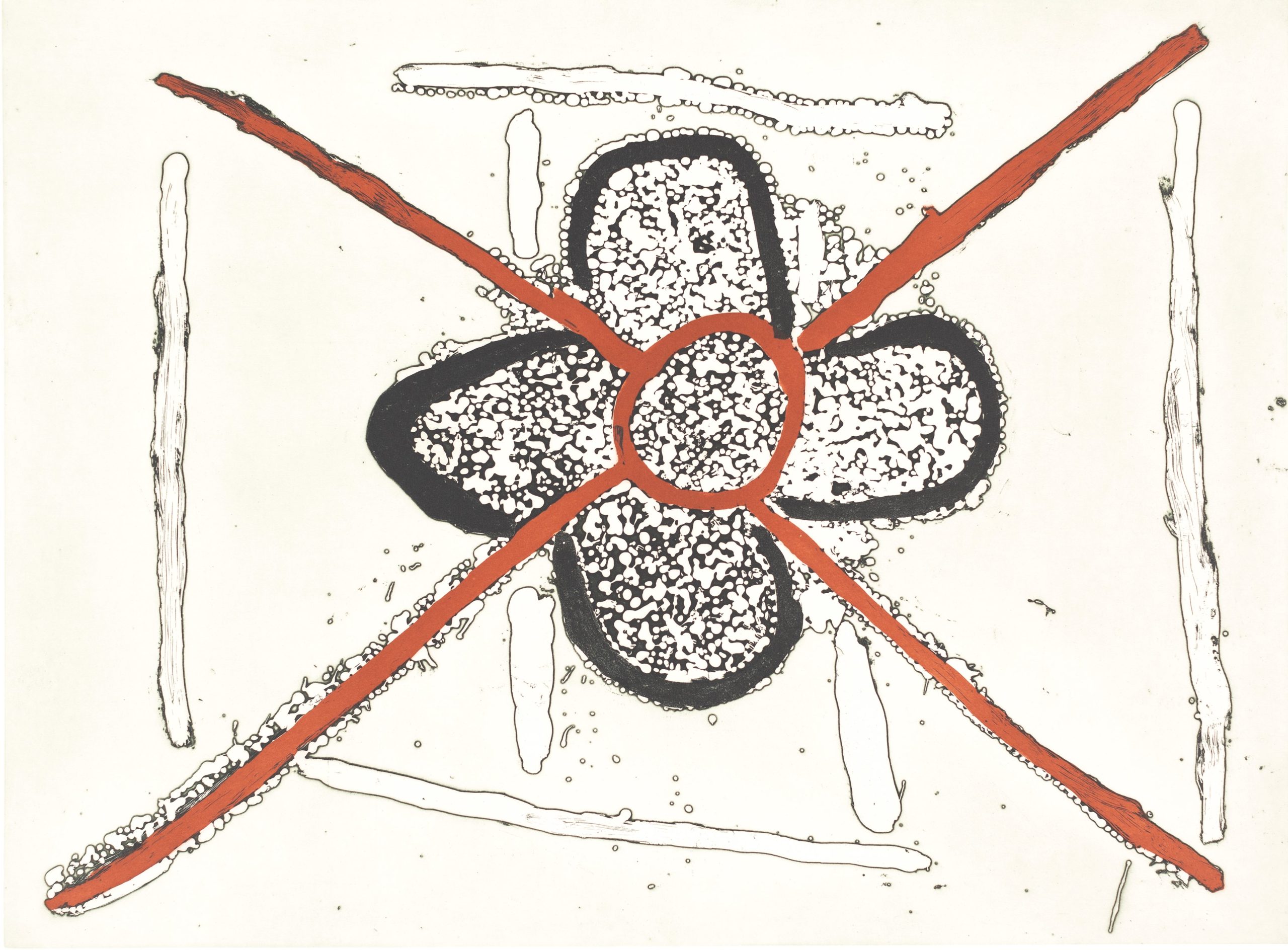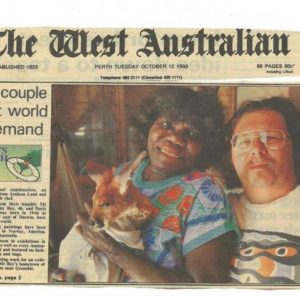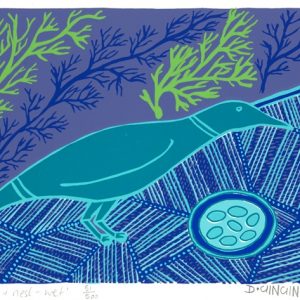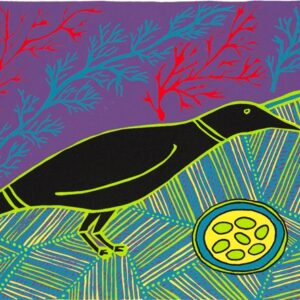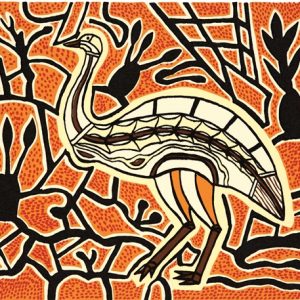Description
About the artwork:
Details
- Limited edition etching (multi-plate)
- Edition: 99
- Editioned: January 2005
- Size: 49 x 66 cm (image), 62 x 79 cm (paper)
- Paper: Hahnemuhle 350gsm
- Printer & Studio: Basil Hall, Basil Hall Editions Darwin NT
About the artwork:
This Jukurrpa (Dreaming) belongs to Nangala/Nampijinpa women and Jangala/ Jampijinpa men. Watiyawarnu or Acacia Tenuissima is a seed bearing tree that grows in open spinifex and mulga country. One Jangala man (a Watiyawarnu) travelled south from a small hill called Ngurlpurranyanu, to Yamunturrngu (also known as Mt Liebig). This part of the story is at a place called Parayu which is near the Granites. As he travelled he picked up seeds and placed them in parrajas (food carriers) which are shown as the four short parallel lines in the centre of the print. He carried one of these on his head. Nangala and Nampijinpa women are depicted as U shapes collecting Watiyawarnu seeds. The straight lines surrounding the central image represent kurlarda (killing spears) and the path of the Jukurrpa. This print and the one titled, Rainbow Men, are the last two artworks completed by the artist before his death in September 2002. The print is signed by his son, Tony Sampson, on behalf of his father.
About the artist: Abie Jampijinpa Jangala
Abie Jangala was born in the bush in the vicinity of Thompson’s Rock about 350 kilometres south of Lajamanu.
After the war Jangala joined his family at Yuendumu, an Aboriginal reserve specifically created to accommodate the increasingly displaced Warlpiri population; later he was moved to a second Warlpiri settlement at Catfish, 600 kilometres to the north.
Despite these moves, at 16 years of age Jangala returned to the land of his birth to undergo his traditional initiation. Abie Jangala lived at Lajamanu in the Northern Territory since the early 1950s and was a strong and highly respected elder of this Warlpiri community. He was a man of great ritual authority, ceremonial boss for water-rain-cloud and thunder Jukurrpa (Dreamings) centred on widely dispersed sites in the Tanami Desert.
He said he painted the way his father told him to paint as “he comes to me in dreams”. His work is noted for its striking dense white dotting over a base colour and simple bold linear designs symbolising the graphic quality of the desert. The elements of thunder, lightning and rain which underpin the belief system of the nomadic Warlpiri people, resonate powerfully in a field of white dots.
Abie Jangala became a painter in 1983 and soon his work began to be exhibited in group shows in Australia, the USA and Europe. His work is represented in museum collections all over Australia and in a number of important international collections.
Collections
- National Gallery of Australia, Canberra.
- Art Gallery of Western Australia, Perth.
- National Gallery of Victoria, Melbourne.
- Flinders University Art Museum, Adelaide.
- Museum and Art Gallery of the Northern Territory, Darwin.
- The Holmes a Court Collection, Perth.
- The Kelton Foundation, Santa Monica, USA
- Thomas Vroom Collection, The Netherlands
- Bromberg Collection, Cincinatti USA
- Kaplan Levi Collection Seattle USA
- Queensland Art Gallery, Brisbane
- Flinders University Art Museum
Jangala was born circa 1919 and died in 2002.

